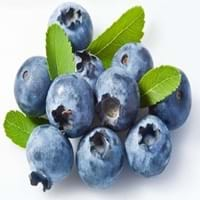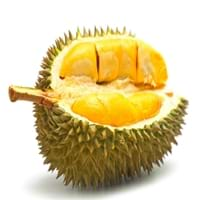Health Benefits
Cancer prevention, Cures gastro-intestinal troubles, Improves night vision, Improves stomach health, Prevents diabetes, Prevents high blood pressure, Reduces blood circulation problems
Anti depressant, Boosts immune system, Cancer prevention, Heart care, Reduces stress
General Benefits
Fights against infections, Helps in weight loss, Prevents blood clotting in vessels, Treatment of urinary tract infections
Anti oxidant properties, Anti-inflammatory properties, Boosts immune system, Controls blood pressure, Controls blood sugar levels, Digestive aid, Flu treatment, Strengthens bones
Skin Benefits
Anti-aging benefits, Nourishes skin, Protects against skin damage
Anti-aging benefits, Brightens and lightens complexion
Hair Benefits
Prevents hair loss
Promotes longer and healthier hair, Protects hair
Allergy Symptoms
Not Available
Diarrhea, Headaches, Hives, Nasal congestion, Red rash, Runny nose, Vomiting
Side Effects
Decrease in blood sugar levels, Diarrhoea, Dizziness, Headache, Internal bleeding, Stomach pain
Affects blood glucose levels, Nausea, Stomach pain
Best Time to Eat
As a snack in the late afternoon, Don't consume at night and before bed, Eat the fresh ones, avoid mixing with any other foods, don't eat after meal., Morning time (before lunch)
Along with meal, As a snack in the late afternoon, Don't consume at night and before bed, Morning time (before lunch)
Vitamin B5 (Pantothenic Acid)
Vitamin C (Ascorbic Acid)
Vitamin E (Tocopherole)
Not Available
Vitamin K (Phyllochinone)
Not Available
Lutein+Zeaxanthin
Not Available
Calories in Fresh Fruit with Peel
Not Available
Calories in Fresh Fruit without Peel
Not Available
Calories in Frozen Form
Not Available
Calories in Dried Form
Not Available
Calories in Canned Form
Not Available
Not Available
Calories in Pie
Not Available
Type
Berry
Tree fruit, Tropical
Varieties
Dwarf bilberry, Piper, bog blueberry, Northern bilberry, Mountain bilberry and Oval-leaved bilberry
D24, D99 (Gob kecil), D123 (Chanee), D145 (Beserah), D158 (Gan Yau), D159 (Monthong), D169 (Tok Litok), D188, D189, D190, D163 (Hor Lor) and D164 (Ang Bak)
Inside Color
Light Green
Yellow
Taste
Sweet
Creamy, Sweet
Origin
Unknown
South-Eastern Asia
Grows on
Trees
Not Available
Soil Type
Moist, Well-aerated
Clay
Climatic Conditions
Cold
Hot, Humid
Facts about
- Bilberries are used in manufacturing of alcoholic drinks.
- They are used to improve aromas of sorbets.
- The green extract of it's leaves is used in textile industry as natural dye.
- 1 kg of durian contains 1350 calories which may cause weight gain.
- It may have a hyperthermic effect on the body, making you feel warmer.
- Study shows that durian has an ability to reduce infertility in men & women.
Top Producer
Japan
Thailand
Other Countries
Denmark, Finland, Iceland, Sweden
Indonesia, Malaysia, Philippines
Top Importer
United States of America
China
Top Exporter
Chile
Thailand
Botanical Name
Vaccinium myrtillus
Durio zibethinus
Synonym
blaeberry, whinberry, European blueberry, whortleberry
Lahia Hassk
Subkingdom
Tracheobionta
Tracheobionta
Division
Magnoliophyta
Magnoliophyta
Class
Magnoliopsida
Magnoliopsida
Subclass
Dillenhidae
Dillenhidae
Family
Ericaceae
Malvaceae
Species
Vaccinium myrtillus
D. zibethinus
Generic Group
Heath
Not Available
Difference Between Bilberry and Durian
We might think that Bilberry and Durian are similar with respect to nutritional value and health benefits. But the nutrient content of both fruits is different. Bilberry and Durian Facts such as their taste, shape, color, and size are also distinct. The difference between Bilberry and Durian is explained here.
The amount of calories in 100 gm of fresh Bilberry and Durian with peel is 44.00 kcal and Not Available and the amount of calories without peel is Not Available and 147.00 kcal respectively. Thus, Bilberry and Durian belong to and category.These fruits might or might not differ with respect to their scientific classification. The order of Bilberry and Durian is Ericales and Malvales respectively. Bilberry belongs to Ericaceae family and Durian belongs to Malvaceae family. Bilberry belongs to Vaccinium genus of Vaccinium myrtillus species and Durian belongs to Durio genus of D. zibethinus species. Beings plants, both fruits belong to Plantae Kingdom.









